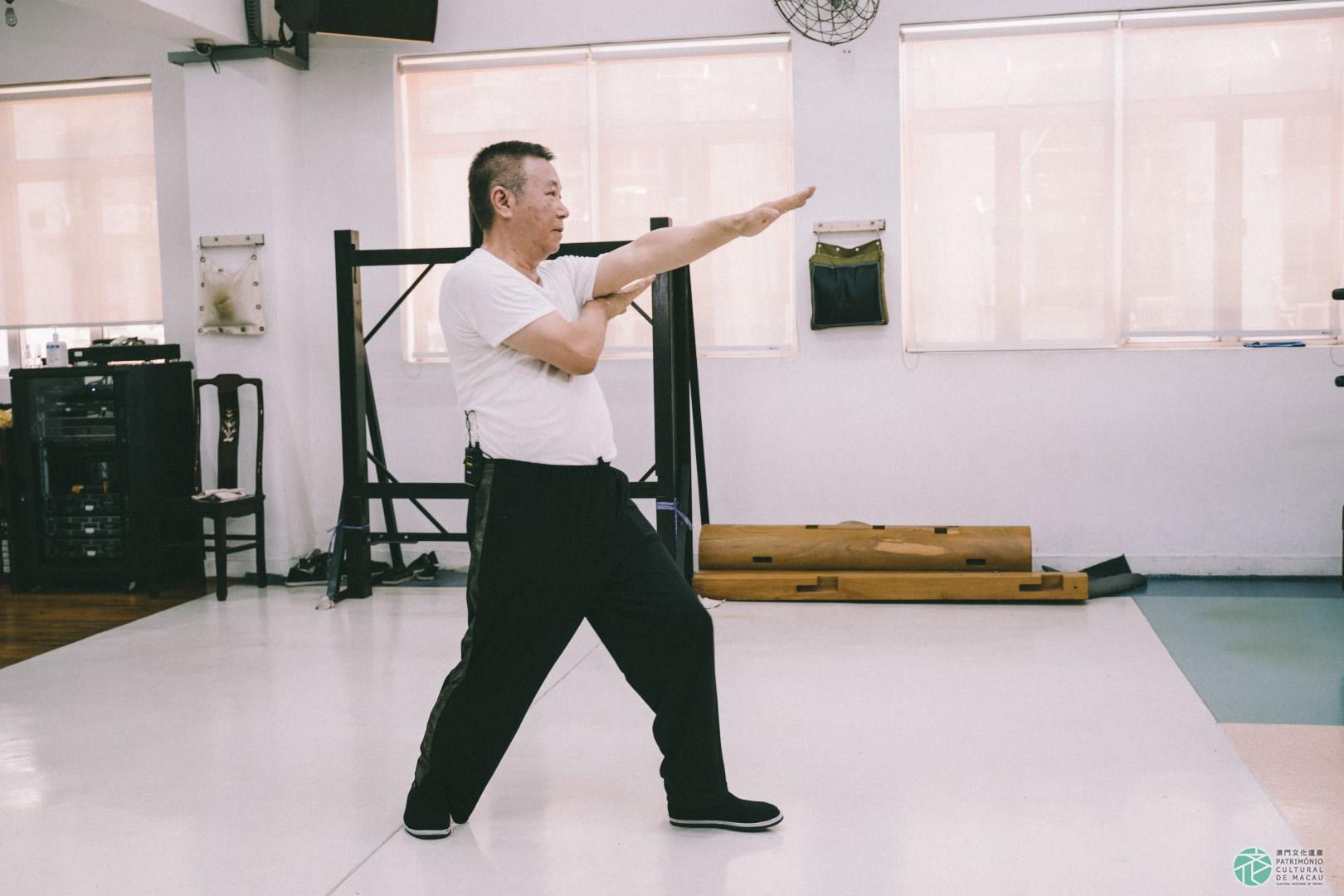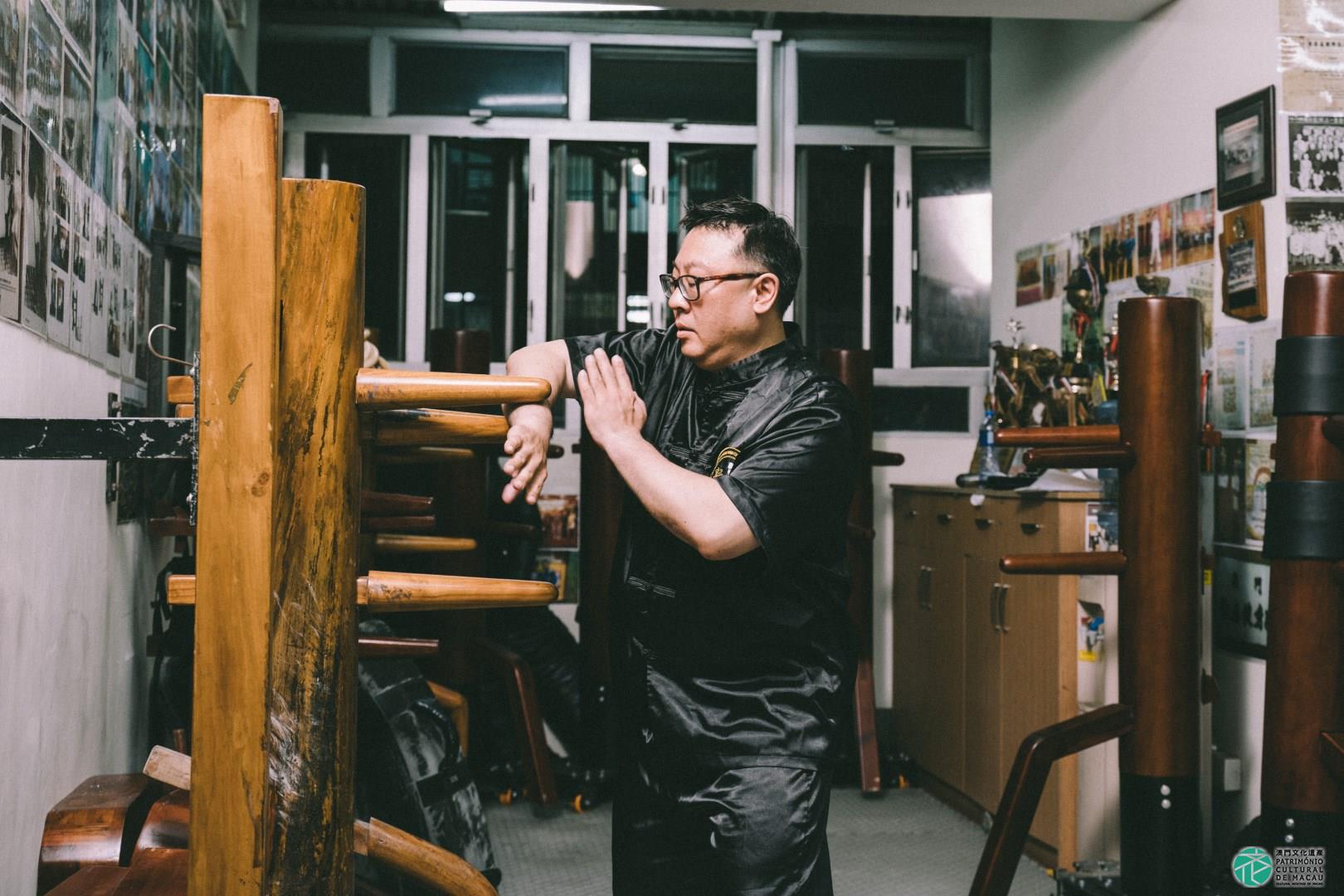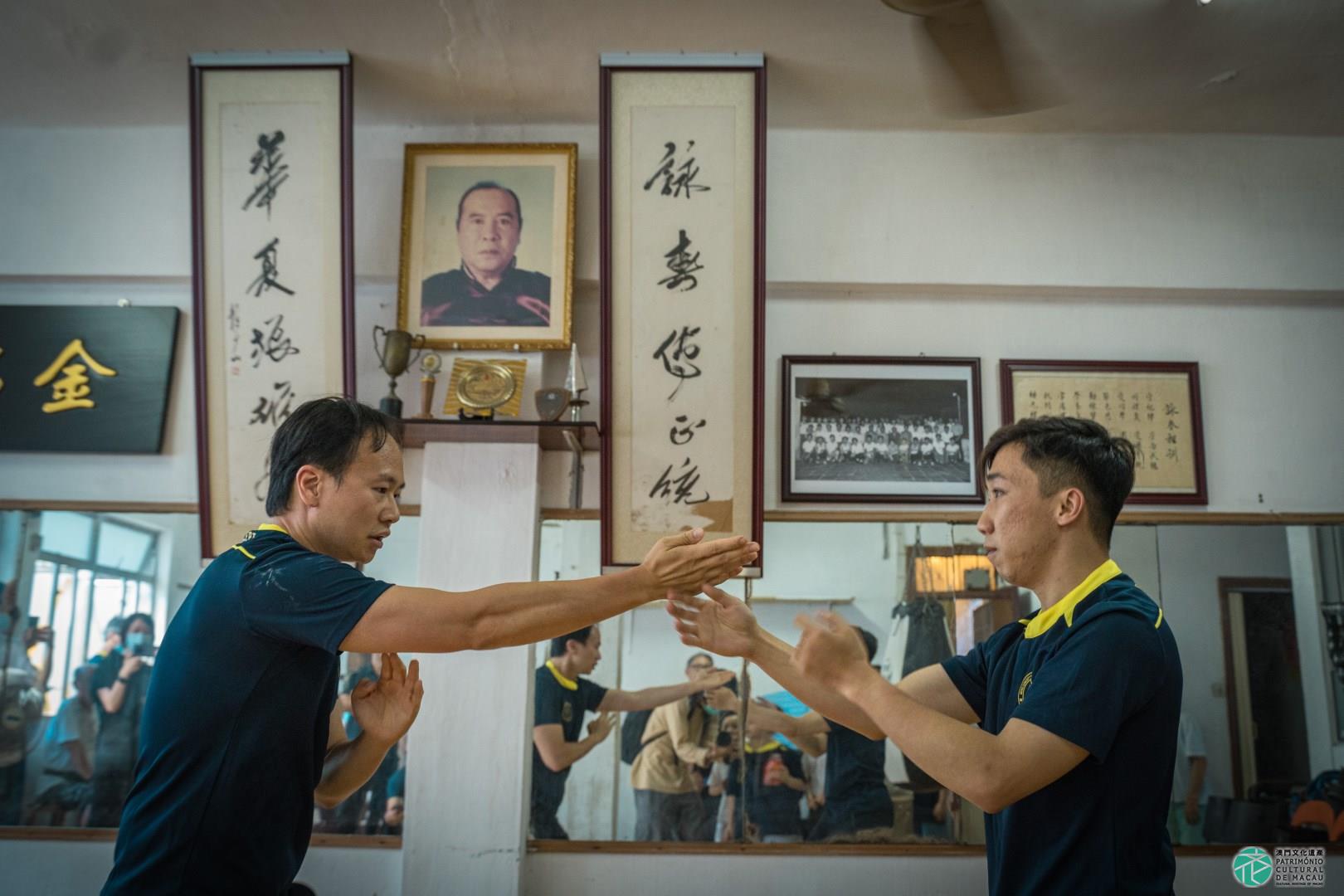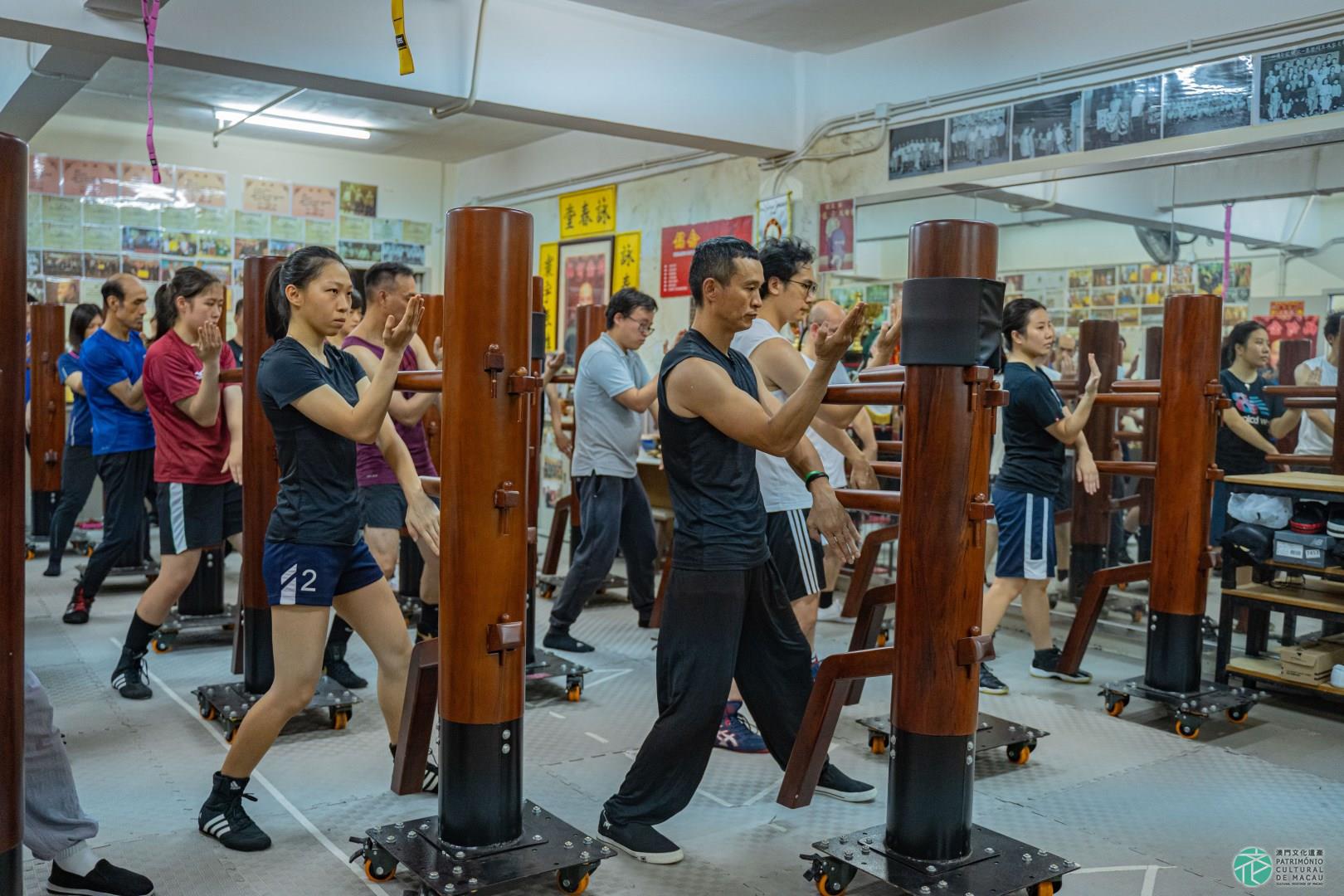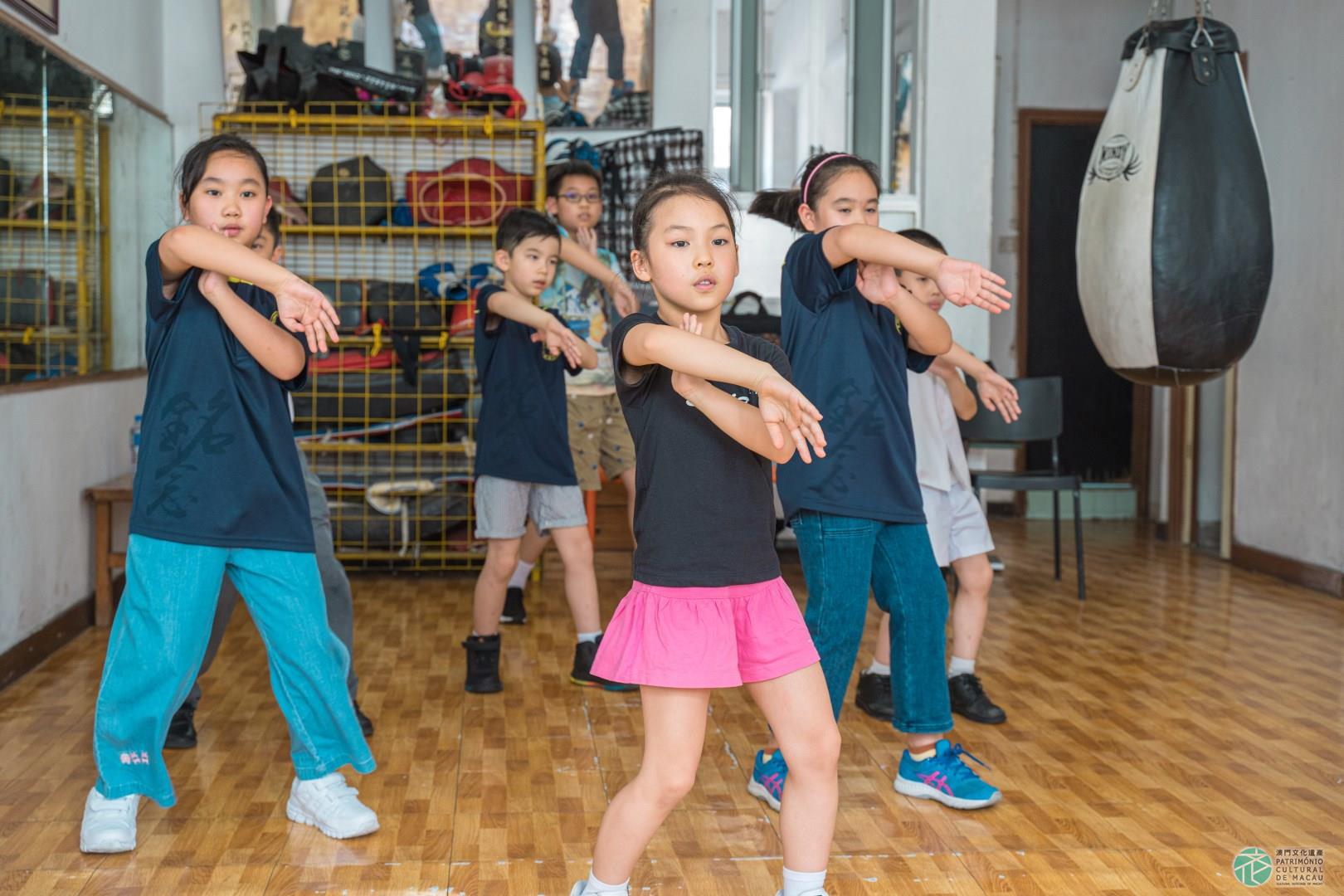Introduction:
Wing Chun is a traditional Chinese martial art that began in the Qing Dynasty. It is based on tactics that make use of the fists for self-defense, involving techniques such as neijia and jinda, which correspond to close-proximity fighting techniques. Compared with other traditional martial arts, it is more focused on quick movements to defeat opponents and minimize harm. Principal fist movements include Siu Nim Tau (Little Idea), Chum Kiu (Seeking Bridge), Biu Ji (Thrusting Fingers) and Muk Yan Jong (Wooden Dummy). The exercise known as Chi Sau is a typical training format, with practitioners fighting closely.
Conservation Status:
In Macao, the continuity of Wing Chun Martial Arts is ensured mainly by martial arts organizations and sports clubs. After the 1970s and 1980s, as the practice of martial arts from Mainland China gained popularity in Macao, local Wing Chun associations continued to remain active in offering Wing Chun classes and fitness programs, also motivating the participation of their members in martial arts’ competitions, particularly in more recent years.
Heritage Value:
Wing Chun is one of the traditional martial arts being widely transmitted in Macao, which is also a good example about the continuity of Chinese martial arts culture. There is a strong focus of the promotion of physical fitness, as well as health benefits and self-defense skills, but there is also a conceptual side to this practice putting an emphasis on the connection between people and nature. The pursuit of traditional Chinese martial arts culture also reveals important elements that have significant value for cultural studies.
